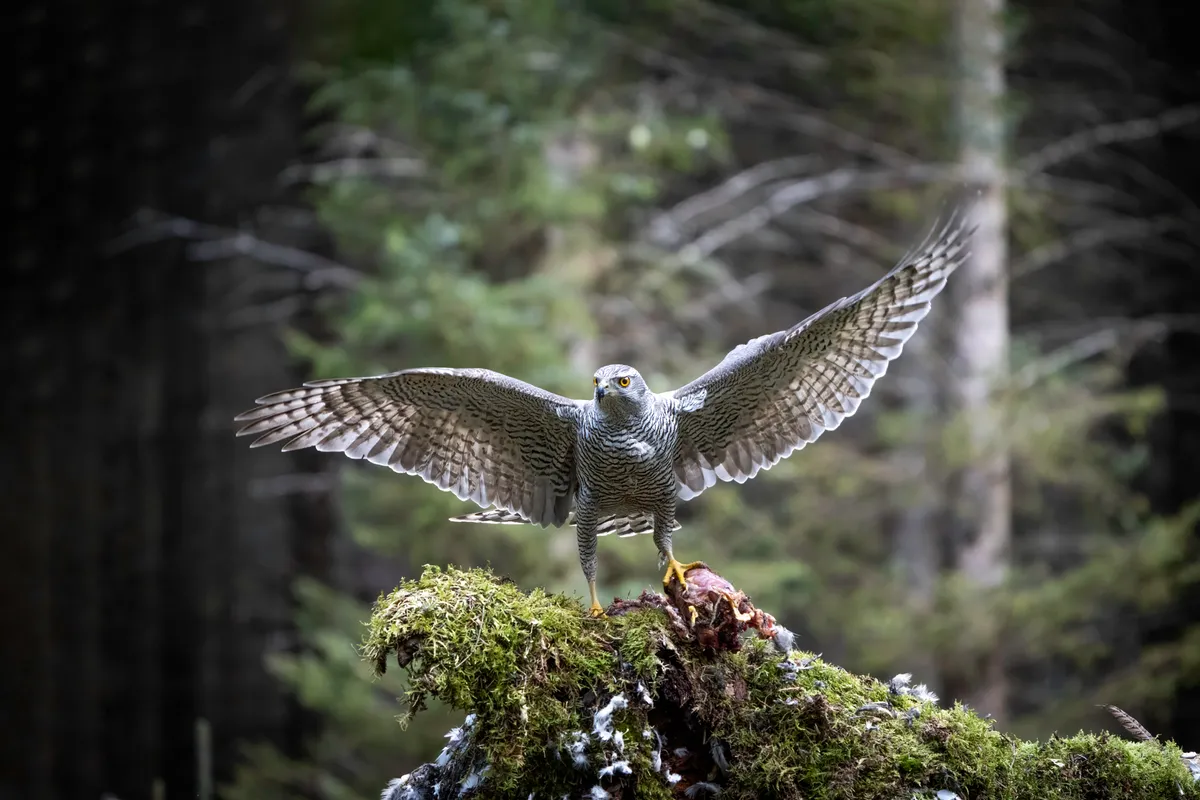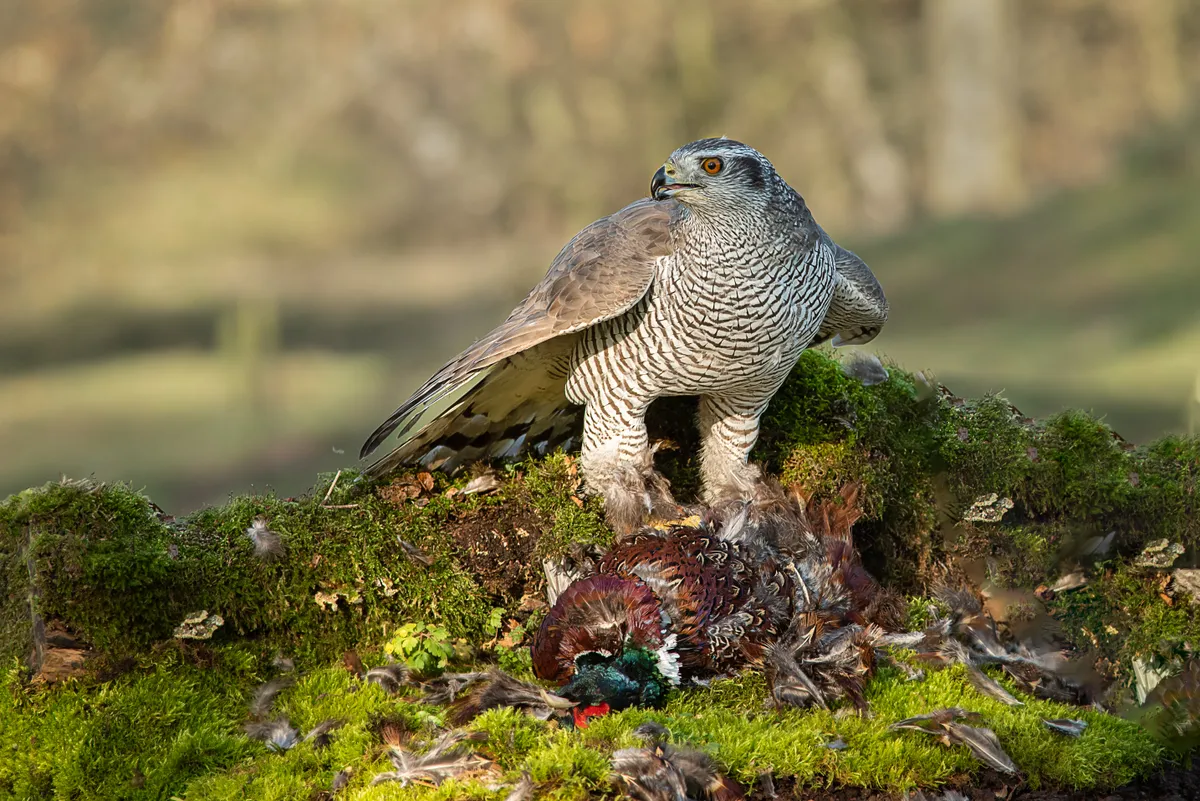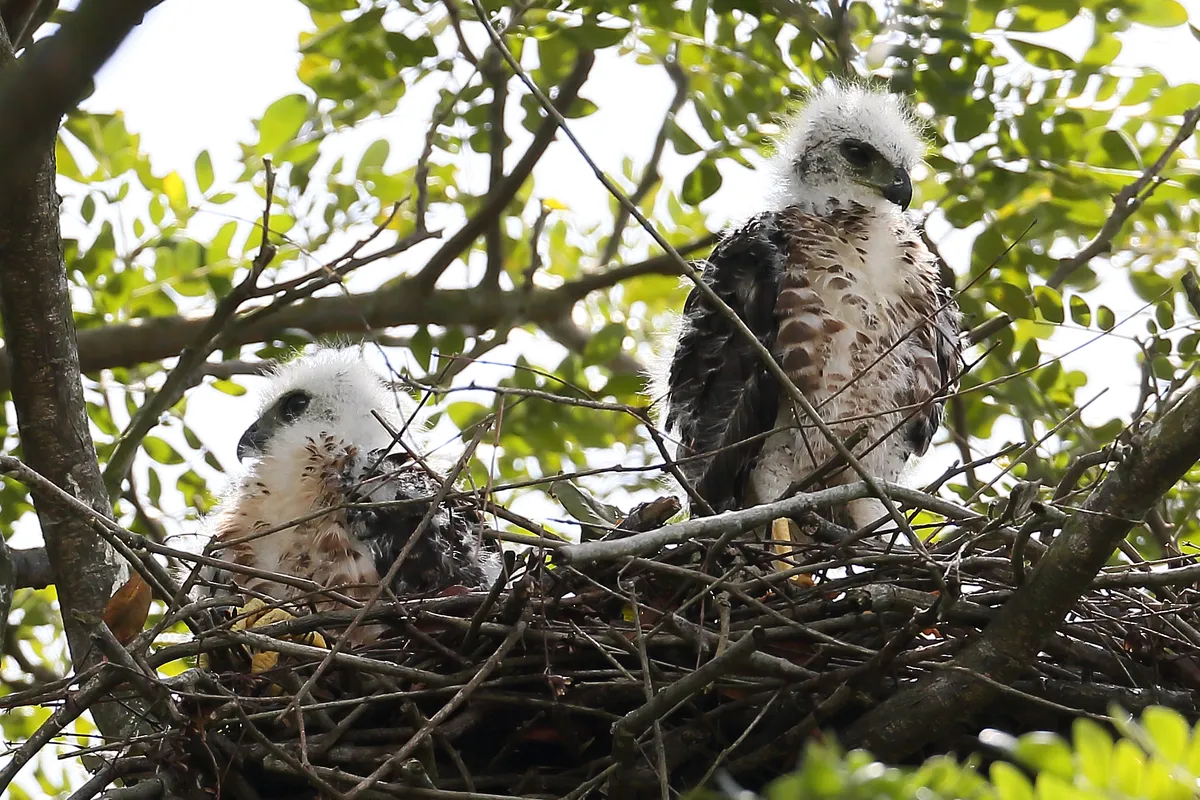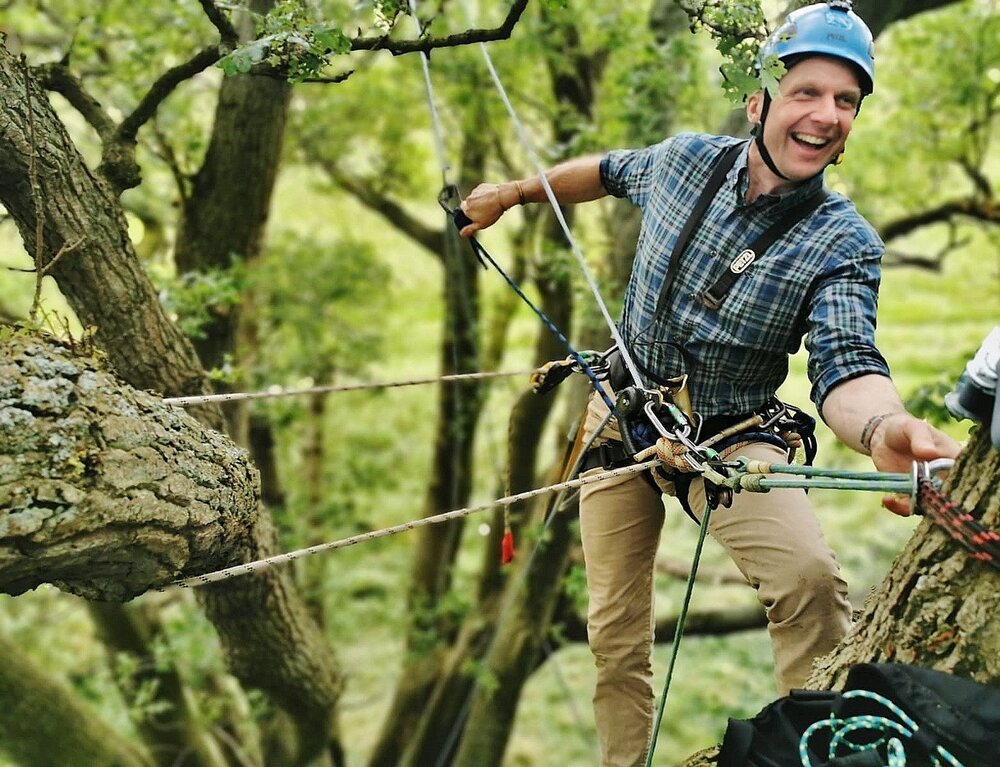There is something larger than life, yet strangely intangible, about the northern goshawk. Some creatures are stitched so deeply into the fabric of their habitat that it becomes almost impossible to separate the two. So it is for goshawks and the densely forested landscapes they inhabit.
Goshawks are particularly fond of coniferous woodland. The anonymous, shadowy ranks of fir, spruce and hemlock seem to embody the bird of prey's mysterious nature. Even the goshawk’s sharply lineated plumage echoes the angular contrast of light and shadow in such places.
What is a goshawk?
Goshawks are large hawks and ambush predators, requiring dense cover from which to launch an attack. They are perfectly adapted to their wooded environment and their highly predatorial lifestyle. A deeply muscled chest designed for explosive acceleration; broad rounded wings; a long tail for balance; a shape-shifting ability to weave through branches at high speed; acute hearing; and pin-sharp eyesight. All are supreme adaptations to hunting at speed below the tree canopy.
How big are goshawks?
Females reach 48–62cm; almost the size of a buzzard. Male goshawks grow to 600–1,100g, while female goshawks reach 900–2,000g.
Their long rudderlike shape increases agility and balance, and their powerful sharp talons are used to crush and suffocate prey. Goshawks are deeply muscled for explosive acceleration.
What is the wingspan of a goshawk?
A goshawk's wingspan is usually between 135 and 165cm. Their wings are short, broad and rounded for better aerial agility when hunting.

How do goshawks hunt?
Goshawks often spend hours perching motionless on branches in overgrown plantations, punctuated by tracks, rides and glades.
Such hunting methods require a finely tuned mental map of complex three-dimensional environments, and an ability to learn from mistakes. There is little doubt that goshawks routinely plan hunts in meticulous detail before they even begin a chase.
Goshawks are intelligent – even calculating – in their ability to problem-solve and think ahead.
Goshawks don’t worry much about making a clean kill, especially of larger prey. Whereas a peregrine falcon, for example, will usually kill its prey on impact after a carefully timed stoop – following up with a merciful nip to the neck if required. A goshawk will simply grab the closest part of its quarry it can and wrestle it to the ground, where a lot of thrashing and flapping ensues as it uses its long legs and powerful talons to squeeze the life out of its prey.
Goshawks’ shadowy hunting methods help explain why it can be so difficult to see them in the wild.

What do goshawks eat and hunt for?
A goshawk’s diet is eclectic. If the goshawk can catch it and kill it, it will. The only limiting aspect is the bird’s body size, agility and speed in relation to any given quarry. Males tend to specialise in smaller passerines, corvids (they love jays) and woodpigeons.
Females are much larger – they can be real bruisers – and can kill and carry fully grown rabbits to the nest. Grey squirrels are a staple and there have even been apocryphal tales of them predating fox cubs.
How long do goshawks live for?
The average lifespan of a goshawk in the wild is seven years.

Goshawk population in the UK
At present, there are only 400 to 500 breeding pairs of goshawks in the UK. But even this is a huge improvement. They were extinct in England, Wales and Ireland by the mid-19th century, and in Scotland by 1900. Relentless persecution and habitat loss played a part in their demise and the insidious effects of highly toxic pesticides, such as DDT, in the 1950s and 60s snuffed out any prospect of a recovery.
The population finally managed to bounce back during the years immediately after the UK joined the EU in 1973; stringent regulation of pesticides has to be a good thing. But perhaps most surprising of all is the fact that most of the wild goshawks now breeding in the British countryside have descended directly from falconry birds. There seems little doubt that many were deliberately set free by falconers who wanted to see them reclaim their rightful place in our countryside and were well aware of how self-sufficient and resourceful these birds could be. Whether escaped or released, the results have been spectacular, helping the goshawk to reoccupy its natural niche.
When is the best time to see goshawks?
The best time of year to spot goshawks in the UK is in early spring, when male and female birds break cover to soar and display together high above breeding territories. Find a location with good, elevated views of large tracts of conifers and wait for the first clear blue-sky days of late February and early March.
Take binoculars, a seat and plenty of tea. Wait for the day to warm up and keep your eyes peeled for conspicuous puffs of white covert feathers at the base of any displaying bird. These stand out against the sky from miles away and help distinguish goshawk from buzzard.
Where to see goshawks
Goshawk hotspots include Kielder Forest in Northumberland, the Forest of Dean in Gloucestershire and the New Forest National Park in Hampshire.
We included Kielder Forest and the Forest of Dean in our round-up of the best forests and woodlands in the UK.
The New Forest has become a goshawk hotspot. In 2001, New Forest head keeper Andy Page recorded the first breeding pair; there are now 45 pairs. The region is at saturation, and currently acting as a species reservoir for their further expansion west into Dorset.
Goshawks can be extremely difficult to see in the wild – hence their popular name, phantoms of the forest. This secretive nature can be explained in part by the fact goshawks are ambush predators, requiring dense cover from which to launch an attack.

How to film or photograph goshawks
Due to their maddeningly elusive nature, the best way to film goshawks is to stake out an active nest during the breeding season. This can be sensitive, tricky and time-consuming: goshawks are highly protected and filming their nest requires a specialist Schedule 1 license from Natural England. The bird’s welfare must be the priority.
While I have had plenty of experience of filming goshawk and other raptor nests over the years, each time it is nerve-wracking, because every bird is different. Until you get to know them as individuals, it is hard to judge what they will tolerate. So it’s important to take things slowly – and to be ready to pull out should the birds show too many signs of stress.
The filming process can be intense. Raptor chicks grow quickly, so it’s often necessary to do five or more filming sessions a week. This involves climbing up to the hide in the pre-dawn gloom. Days in the confines of the hide are usually long, stuffy and often frustrating, but always worthwhile. For me, spending 15 hours a day watching the secret life of goshawks through a lens for six weeks is one of life’s joys.
When the birds are dozing, or away from the nest hunting, I spend my time jotting down observations in a diary, listening to audiobooks in one ear at low volume, or drinking endless cups of tea from a flask in an attempt to stave off tiredness.
I spent around 400 hours filming at that nest for our New Forest film, and there were many magical moments. The female was always there, either incubating the eggs or sheltering and feeding the three chicks after they had hatched. I got to know her pretty well and although I can’t say she ever enjoyed having me around, she did tolerate me, which is as much as I could ever hope for. She was a stunning bird – all muscle and hunting prowess.
But her mate stole the show. He would only stop by the nest long enough to deliver food, but even so, I vividly recall the first time I saw him. His eyes were his most arresting feature. Whereas the female’s were a brilliant, piercing orange, his irises were the colour of rubies or smouldering coals. That will always remain my fondest memory of my extraordinary season spent filming in the New Forest: this otherworldly creature, defiantly at home in the forest from which his ancestors were once driven, and playing his part in raising a new generation of these magnificent and ferocious birds.

